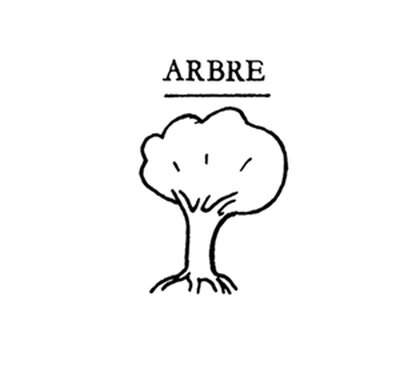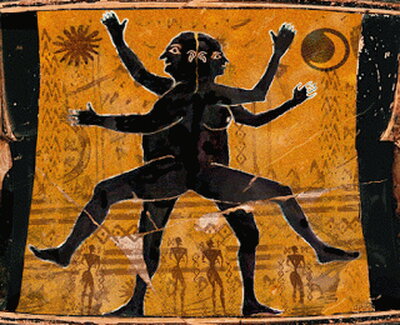In his lecture, Professor Rushing guided us through Sigmund Freud’s “A Child is Being Beaten” essay and three influential essays by Jacques Lacan. In doing so, he showed how psychoanalysis provides a compelling account of the human subject as one defined by a permanent lack, a missing something, which we attempt to get at through the construction of fantasies.
In “A Child is Being Beaten,” Freud begins with a puzzling aporia: why did so many of his patients seem to share a common fantasy about watching another child being beaten by an authority figure, and—equally puzzling—why did they experience this fantasy as pleasurable?
Professor Rushing’s explication of this essay focused on Freud’s archeological method, documenting how the fantasy appeared in different guises during the course of the child’s development. Initially, the child observes their father beating another child. Later, however, the fantasy morphs into a masochistic one, where the child themself is the one being beaten, before the fantasy morphs into yet another one, where a different authority figure is beating a boy or group of boys. What are we to make of this? One of Professor Rushing’s main takeaways was how this essay emphasizes the transformative, concealing nature of fantasy: an unacceptable desire, such as the incestuous desire for the father’s total love, is transformed by fantasy into something more palatable to the conscious mind.
Where do such forbidden desires stem from in the first place? To help answer this question, Professor Rushing turned next to Lacan’s famous essay about the mirror stage. Lacan notes how at a certain stage in an infant’s development it becomes able to recognize itself in the mirror—to see it’s reflection and go, “That’s me!” What’s crucial about this recognition is that it is fundamentally a misrecognition, as the image in the mirror is not the child but precisely just an image. This identification, while absolutely necessary for the development of the subject, is also profoundly alienating, as the subject’s being is replaced by a sign, a representation of that being.
The mirror stage thus marks the subject’s entry into the symbolic order, that is, the field of language and intersubjective relations. In the rest of his lecture, Professor Rushing elucidated some of the ramifications of this fact while also showing how Lacan’s theory radically revises Sausserian semiotics. Lacan takes Saussure’s familiar representation of the relationship between the signifier and signified and flips it on its head. The signifier is now given the place of prominence on top, and the enclosing circle binding the two together has vanished.

Professor Rushing showed how the relationship between the signifier and signified is never as stable as it appears to be in Saussure’s formulation. Arbre could certainly refer to a tree, but it could also conjure up a number of other referents: a symbol of strength and majesty, the Christian cross, the letter T, the tree of life, tree diagrams, and so on. These referents in turn conjure up their own, and so there no longer appears to be a stable, 1:1 relationship between the concept and its signifier. The signifier points only to more signifiers, in an unending chain, always deferring meaning. We should not be surprised then, that arbre can be written in anagrammatic form as barre—the signifier and signified are barred off from each other.
So too with human subjectivity. Just as the signifier is barred from the signified, so too does assuming the specular image in the mirror stage as a signifier for our being bar us from it. This aspect of our being that falls away is what Lacan terms the Real, that which is unrepresentable in our symbolic order. Desire is set in motion by our hope to fill this missing piece, and we construct fantasies in order to orient this desire in certain directions.
Professor Rushing provided a number of examples to help illustrate this theory, such as Aristophanes’ myth on the origin of love. Originally, the myth has it, human beings were made of two conjoined individuals, until the gods rent them in two and scattered them. For Lacan, the plight of Aristophanes’ original humans is the plight of all human subjects, on an unending and impossible quest to find the missing parts of our being that would complete us. Professor Rushing also discussed Les Blank’s documentary Gap-Toothed Women (1987) as an example of fantasy (while also pausing to note how psychoanalytic critics could have a field day with the name “Les Blank”). The film consists of interviews with a number of women with a gap tooth, from working class women to models and Supreme Court Justice Sandra Day O’Connor. Fetishizing gap teeth is one example of the workings of fantasy, but as Professor Rushing showed, what makes it a particularly poignant one is that the fetish-object here, that special thing to help fill in the missing piece, is itself a gap, an absence, a void. Instead of filling the void, we orbit around it.

The question and answer session was lively and frequently touched on the wider applications of psychoanalysis, venturing off the analyst’s couch to interrogate its uses in both academic and political work. Responding to a question about the critical uses of psychoanalysis, Professor Rushing noted that while there are certainly many scholars who believe psychoanalysis is inadequate to addressing socio-political questions, he would disagree. He noted the importance of psychoanalysis in foundational post-colonial texts, such as the work of Gayatri Chakravorty Spivak and Frantz Fanon; Fanon was himself a trained Lacanian psychoanalyst. Professor Rushing also argued that psychoanalysis had important contributions to make to our political understanding, especially with regard to ideology. He gave as an example the concept of fetishistic logic (“I know very well this shoe is just a shoe…but nevertheless…”) in explaining the January 6th unrest at the US Capitol. How can someone know very well that Donald Trump lost the election, and yet nevertheless act and believe as if he didn’t? In a world that’s frequently characterized as “post-truth,” and with the massive proliferation of conspiracy theories such as Q-Anon, Russiagate, or those related to COVID-19, it may be that psychoanalysis, with its attunement to desire, fantasy, and those aspects of ourselves and our society we’d rather repress, will become increasingly important to political analysis.